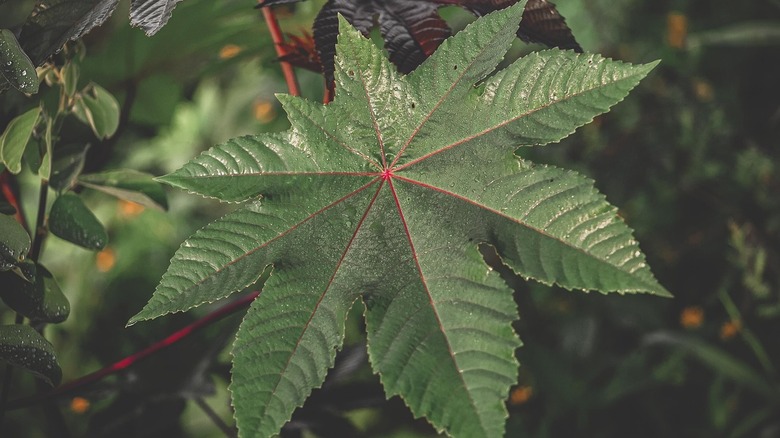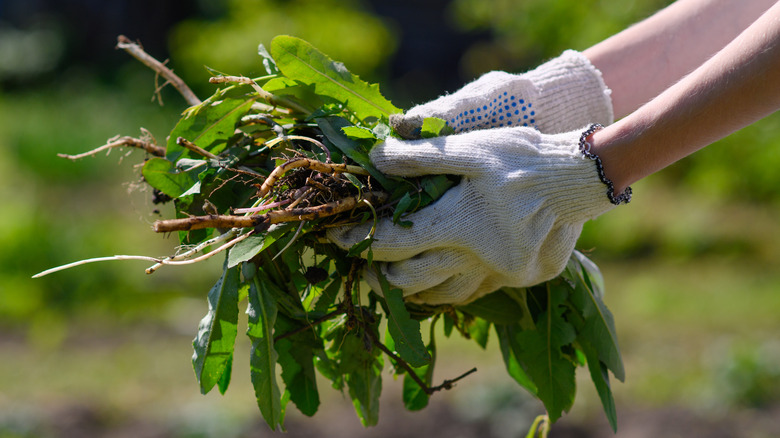The Plant You'll Want To Destroy Immediately If You See It In Your Yard
Castor bean plants (Ricinus communis) are an invasive species that are more dangerous than they look, and if you find this plant growing in your yard, you'll want to take steps to remove it. These weeds are common throughout the southern United States, and though they've been used industrially to make motor oil and certain cancer medications, the castor bean plant is not benign. Besides the fact that these weeds crowd out native plants, their seeds are also poisonous. Ricin is a natural poison that's in the castor bean plant, though the seeds contain the highest quantities.
If chewed and ingested, castor beans can be fatal and not just to humans. The poison in these seeds also affects dogs, cats, horses, cattle, rabbits, pigs, goats, and sheep. When eaten, ricin causes diarrhea, vomiting, low blood pressure, dehydration, seizures, and other symptoms; and in some cases, it may lead to death, as the toxin keeps cells in the body from producing the proteins they need to function.
How to identify the castor bean plant
If you're worried about curious pets or children getting too close to these invasive weeds, you'll need to be able to identify the castor bean plant before you can get rid of it. The castor bean plant grows between 3 and 15 feet tall and has large leaves with radial lobes with teeth around the edges. The stems are typically red, while the leaves may be green or partially red. Pink, green, or red spiny seed pods will develop on the plant and turn brown as the seeds mature.
Eventually, the seed pods of the castor bean plant will break open, releasing the most toxic portion of the plant. The seeds of the pods will forcefully pop out, which gives them the ability to spread over distances quickly. Because of their invasive nature and the potential danger of their seeds, it's important to keep castor bean plants from growing and spreading. If you see one growing in your yard, you should destroy it.
Though it's likely not common, castor beans can be processed to extract the ricin inside for malicious purposes. A botanist at Florida Gulf Coast University, Dr. Jay Horn, explained the risks of the castor bean plant's toxic component to ABC7. "It's considered to be one of the most deadly poisons on earth, where just a few micrograms are enough to kill most adult humans," he said.
How to destroy a castor bean plant
When preparing to get rid of a castor bean plant, it's a good idea to wear protective gloves and eye goggles. While touching the plant won't expose you to large quantities of ricin that could poison you, the plant may irritate your skin. To remove the invasive plant from your yard, carefully dig it up, making sure to pull the roots from the ground. Once the plant is removed, burning or boiling it should destroy the toxins inside, ensuring the seeds won't find their way back into the ground. If you burn the plant, keep in mind that castor bean seeds are known to germinate after a fire.
You can boil the castor bean seeds and the plant in a pot on a grill for 30 minutes or more to get rid of the ricin inside them. Once it's cooled off, you can bury the dead plant in the ground. Make sure to clean anything that might have touched the plant or seeds with bleach afterward.


